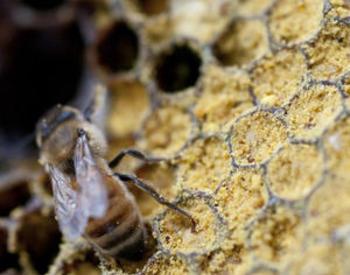Early one spring, some of the first bees to arrive on my Japanese plum tree had something odd on their abdomen. Upon further inspection, it turned out to be the heads of a couple of parasitic insects. One of the strangest parasites, Strepsiptera, belong to their own order and have a life cycle quite different from most other insects.
Strepsiptera are beetle-like parasitic insects that live off of bees and other insects. Those that attack bees are in the family Stylopidae. They tend to be host-specific and attack short-tongued bees.
The larvae burrow into the exoskeleton of the bee, where they mature into adults. Their heads can be seen protruding from under the abdominal segments. The females, who have no legs, wings, or eyes will remain there for their entire lives. The adult males, which have large eyes, branching antennae, and “twisted” wings, will leave to search for a mate.
Bees with Strepsiptera behave differently than normal bees. The female bees emerge earlier, and they do not construct brood cells. This gives the Strepsiptera time to mate and disperse their first instar larva (called triungulin) to many flowers, as their host forages. The larva will then try to find a new bee to take them back to her nest.
References
Wilson, J.S. and O. Messinger-Carril, 2016 The Bees in your Backyard. Princeton University Press
Danforth, B.N., R.L. Minckley, and J.L. Neff, 2019 The Solitary Bees. Princeton University Press



















